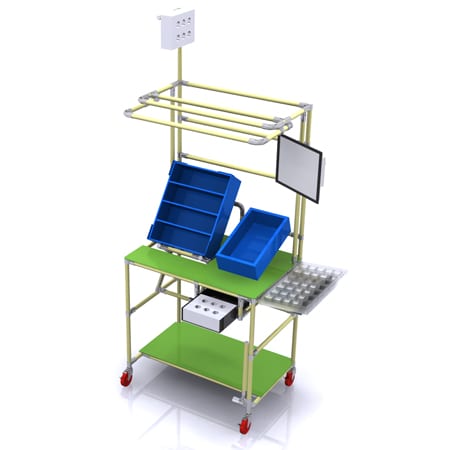What are the Best Workstations for your Work Floor?
The ideal workstations for your manufacturing floor serve multiple purposes. They must also serve the company’s needs for quick, error-free assembly. Additionally, employee safety must be considered, protecting individuals from cumulative trauma disorders like carpal tunnel, and joint pain. While this customized need may sound like an expense that violates the tenets of lean manufacturing, combining the services of an ergonomist, an engineer, and modular building materials lets you easily achieve this goal.
Designing an Ergonomic Workstation
On a factory floor, it may initially seem impossible to design an ergonomic workstation that meets each employee’s needs while applying lean methods. Using traditional materials, it might be. Imagine needing to buy expensive furniture that causes each employee to adjust bench, chair, or table height to suit them. You keep employee safety and comfort as a high priority and avoid countless expenditures when using the appropriate structures designed for your space:
• Manual Assembly Workstation – Stations in which employees are crucial, performing all tasks at this type of station, from beginning to end.
• 5S Workstation – A workstation designed for floors that run the 5S approach of production: sort, set in order, shine, standardize, and sustain.
• Custom Cut Out Workstation – Some production spaces call for a station designed strictly based on their floor layout to make it as lean and ergonomic as possible.
Using pipe and connector, you can build workstations with easily adjustable bench, counter, rack and shelf heights. The best workstation for your production floor serves everyone’s needs, especially the customers’ by turning out a lower costing and higher quality product.
What an Ergonomist Considers
An ergonomist considers the best production design that also reduces or eliminates musculoskeletal risk factors including:
• Exertions or motions requiring or creating force
• Repetitive and extreme exertions, motions, postures
• The duration of the above, plus the duration of exposure to vibration or cold
• Insufficient duration of pause or rest
• Work factors like machine-paced production
• Environmental factors
Accommodating these safety risk factors does not mean increasing costs or reducing production.
One of the keys to a design that reduces risk while speeding production is component accessibility. Regarding work area design, the flexibility of height adjustment protects against extreme motions and postures. The ergonomist designs with a distinction between work surface height and working height. The height of the object and task determine work surface height, while the appropriate working height differs for each individual and relates to measurements involving their elbow height.
For example, when conducting fine work like proof reading documents or conducting small part inspection, the appropriate working height measures six inches above elbow height. For precision work like mechanical assembly, the appropriate working height measures four inches above elbow height. Using a custom designed workstation can speed up production because it reduces uncomfortable postures and motions. That lets employees work more securely, which also translates to higher rates of production.
Proper work area design can speed, not impede, production while providing a safer environment on the work floor. Combining custom racks and work areas with tool holders, shelving, and material bins provides easy reach, reducing employee motions and enables speedy assembly. It’s time to get started and create ergonomic workstations that will make a difference in your business.

